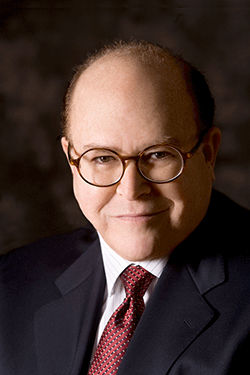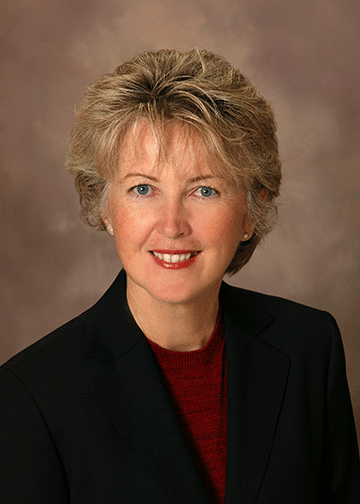Because quality of care and patient safety are the central themes in continuing medical education today, the Accreditation Council for Continuing Medical Education’s Criterion 21, which requires that a CME provider participate in an institutional or system framework, is the linchpin to achieving Accreditation with Commendation.
Specifically, the criterion states: “The provider is focused on integrating and contributing to healthcare quality improvement. The provider has evidence that CME has become part of institutional, or system, quality improvement efforts.”
Your commitment to being part of a quality framework should begin with the language in your organization’s mission statement and be manifest in every activity that you plan, implement, and evaluate. Here’s how.
Defining a Quality Framework

To be successful in demonstrating compliance with Criterion 21, you must describe both your internal and external quality framework.
Internally, the framework should demonstrate integral intra-organizational mechanisms that systematically identify areas of poor quality performance in targeted areas of education. While the type of internal mechanisms your organization uses will depend on the type of CME provider your organization is, to comply with this criterion you must engage in these processes to ensure your approach to improvement in quality of care is consistent.
The underlying concept is that a Level 3 CME organization—one that qualifies for Accreditation with Commendation—takes the time to clarify the emerging quality issues in selected content areas. It then uses those gaps in professional practice to create CME activities that result in demonstrable improvement in quality metrics. In other words, the CME provider can objectively demonstrate that it has contributed to an improvement in specific quality findings through its CME program.
The external framework should demonstrate that the content of CME incorporates established best practices, current guidelines, and/or appropriate standards of care. While the external mechanisms are important to demonstrating compliance with Criterion 21, they are secondary to the internal mechanisms.
Here are some examples of mechanisms that contribute to a potential framework for different types of CME providers:
Medical School
Internal mechanisms:
• Create a subcommittee dedicated to the quality of CME.
• Base CME activities on clinical department-based quality findings.
• Use QI department findings as basis for behavior change.
• Use regularly scheduled series (RSS) to systematically address quality findings.
External mechanisms:
• Use applicable clinical guideline(s) to establish the educational outcome goal.
• Design educational outcomes measurements that will determine the impact of CME interventions on quality improvement relevant to clinical guideline goals.
• Have key CME course directors and faculty participate in guideline writing or other quality-driven committees with other bona fide standard-setting organizations.
National Specialty Society/Association
Internal mechanisms:
• CME program has a strong relationship with board-established quality committee.
• Organization’s leadership sees the CME program as a mechanism to change behaviors and trigger the implementation of appropriate guidelines.
External mechanisms:
• Publish clinical guidelines and use the CME program to execute changes in member guideline-related behaviors.
• Have key CME course directors and faculty participate in guideline writing or other quality-driven committees that are both internal and external to the association.
Hospital/Healthcare System
Internal mechanisms:
• The CME program is integrally involved with the institution’s QI committee and vice versa.
• Many of the activities of the CME program are planned to address internal problems in practice related to quality and patient safety findings.
External mechanisms:
• Use applicable and timely clinical guideline(s) to establish the educational outcomes goal.
• Use educational outcomes measurements to determine the impact of CME interventions on quality improvement that is tied to clinical guideline goals.
• Have key CME course directors and faculty participate in guideline writing or other quality-driven committees with other bona fide standard-setting organizations.

Internal mechanisms:
• The CME advisory board assesses areas for quality improvement in core areas of content, which are updated periodically in strategic planning sessions.
• Establish a chief quality officer—either on staff or as part of an active CME advisory board—who intervenes in the planning of every CME activity to ensure that identified quality issues are addressed, improved, or resolved.
External mechanisms:
• Use applicable and timely clinical guideline(s) to establish the educational outcomes goal.
• Use educational outcomes measurements to determine the impact of CME interventions on quality improvement that is tied to clinical guideline goals.
• Have key CME course directors and faculty participate in guideline writing or other quality-driven committees with other bona fide standard-setting organizations.
Documenting Compliance with Criterion 21 in Activity Files
Criterion 21 is system-based, and there are no performance-in-practice labels for “Engagement with the Environment” criteria. Nevertheless, it is prudent to demonstrate how your organization adheres to your quality frameworks. To demonstrate compliance, the following examples are a good place to start:
• Conduct periodic strategic planning sessions with your CME team and clinical experts to clearly identify emerging quality and patient safety issues in your core areas of education; keep notes on the issues you identify so that you can ensure those issues are incorporated into activities planned in the next year. This will show that you incorporate key quality and patient safety issues into your CME program and document the process.
• If you have a chief quality officer who is responsible for ensuring that identified quality and safety issues are infused into your activities, be sure to document the CQO’s input into staff meetings, planning sessions, etc.
• Your planning activity notes should incorporate up-to-date biographical information on course directors, board members, and committee members. Their appointments with other organizations, especially those that may be involved in standard setting, guidelines development, and similar processes bring valuable insight into the planning process.
• Where and when applicable, keep minutes from meetings where activity planning and content incorporates or addresses current standards of care and associated guidelines.
• Track activity evaluation results where competence, performance, and/or patient outcomes data can be compared to baselines, standards, or guidelines.
• Maintain activity file notes on collaborative partners, especially those who are associated with standard setting for the professional practice areas.
• Maintain a database of your outreach efforts to quality departments, committees, and organizations.
• Make sure that your activity file captures the standards, best practices, and/or guidelines that were current during the planning and implementation phases of the activity.
As you can see, demonstrating compliance with the quality framework and its impact on your CME program is not something that you back into. It starts with your CME mission, progresses through the fiber of every activity you plan, and is based on an organization-wide commitment to using your program of CME to improve quality of care and patient safety as a primary commitment.
Steven Passin is the president and CEO and Judy Sweetnam is a senior associate and director of training for Steve Passin & Associates, Newtown Square, Penn. You may reach Steve at [email protected] and Judy at [email protected].





